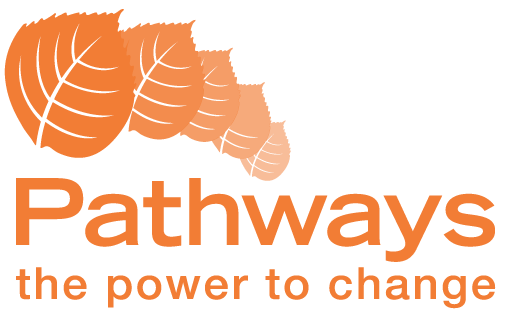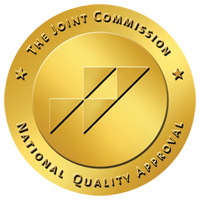The National Institute of Mental Health estimates that 21.4% of the adults in the United States experience a mood disorder at some point in their life. While in the past, distinct treatments for depression or mood disorders existed, today people suffering from such can be treated and continue with their productive lives. Pathway Real Life Recovery Program aims at helping individuals suffering from mood disorders and mental conditions regain a purposeful life. If you or someone you know is battling mental health issues, contact us by calling us at 801-895-3006 or fill our online form.

The Types of Mood Disorder We Treat
Moodiness and the associated symptoms develop disorders if they affect a person’s functioning at work, school, home, in social events, and other meaningful interactions. We effectively treat different types of mood disorders including:
- Atypical Depression -Atypical depression (dysthymic disorder) is a persistent depressive disorder (chronic major depression). It is a major depression with some symptoms that vary from the traditional description. In many cases, atypical depression begins in the teen years. It is defined as being in a depressed mood most of the time for two years or more (one year for adolescents and children) and having five or more of the symptoms listed below.
As mentioned, a symptom of atypical depression may be temporary improvements in mood caused by positive information or events. That differs from melancholic depression, in which positive events rarely cause mood improvement.
- Bipolar Disorder - Bipolar disorder is a mental health issue whose symptoms include extreme lows and highs in a person’s mood and energy. These abrupt shifts can negatively impact the victim’s life. Bipolar disorder can have either manic or depressive symptoms. Manic symptoms include excessive restlessness, energy, activity, racing thoughts, rapid talking, irritability, a euphoric feeling, and so on. Bipolar disorder can be further classified into Bipolar I disorder and Bipolar II disorder.
- Cyclothymic Disorder -
- Depression Induced by Substance Use or Medication -
- Depression Related to Medical Illness -
- Disruptive Mood Dysregulation Disorder - Disruptive mood dysregulation disorder is a common mood disorder in children under 18. It is characterized by episodes of extremely violent and uncontrollable behavior.
- Major Depressive Disorder - Major depressive disorder, also called clinical or major depression, is characterized by long periods of unexplained extreme sadness, desperation, and/or fatigue that could last for at least two weeks. While certain illnesses or life events could trigger it, one could develop depression without a specific trigger. A person with a history of depression will likely experience more episodes in the future.
- Peripartum (Postpartum) Depression -
- Persistent Depressive Disorder (Dysthymia) - Persistent depressive disorder (dysthymia) is mild but an ongoing type of depression. Dysthymia is characterized by bouts of depression or irritability that could last for as long as two years.
- Premenstrual Dysphoric Disorder (PMDD) -
- Psychotic Depression -
- Seasonal Affective Disorder (SAD) - Seasonal affective disorder (SAD) is a depressive disorder that has a seasonal pattern. For most people, SAD symptoms start during the fall and intensify during the winter. The symptoms include a general feeling of lethargy and moodiness, which could develop into depression during the spring and early summer.
- Situational Depression -
- Treatment Resistant Depression -
- Others – other forms of mood disorders are caused by medical conditions, illnesses, medications, or drug use and abuse. For instance, persons with terminal diseases such as cancer can experience bouts of depression. Also, people with drug use disorders expose themselves to toxins which could bring about mood disorders.
Pathways Real Life Recovery provides mental health services that are among the most advanced and comprehensive outpatient and inpatient mood disorder treatment Utah has to offer. Our therapeutic programs are focused on each client's specific needs and mood disorder treatment goals. Our therapists work closely with you to help you overcome such challenges as depression, anxiety, trauma, grief, abuse, addiction, and family issues.
We offer advanced therapeutic programs with methods of treatment for mood disorders to help you control mood issues and live a happier life and fulfill your potential.
If you have been suffering from a mood disorder, there is help available to overcome the ongoing pain and uncontrolled thinking that leads to emotional pain and despair.
Pathways provide a supportive environment of professionals to guide you on a journey of mental, emotional, and physical improvement. You will learn the self-empowering and healing benefits of adopting gratitude, self-exploration, and restructuring self-limiting thinking and beliefs.
Mood Disorder Treatment Options at Pathways
Pathways offer both inpatient and outpatient care options for our clients who are struggling with a condition such as anxiety, depression, mood disorder, PTSD, OCD, and other mental health disorders.
Residential Treatment
Our inpatient treatment center (residential care) provides a structured living environment free from the distractions of regular daily routines. This allows clients to focus fully on treatment.
Outpatient Treatment
The Pathways intensive outpatient program (IOP) offers the same treatment inclusions as the residential program options, but clients go home each night.
Pathways Mood Disorder Treatment Methods
Our mood disorder treatment centers use various therapeutic methods that can consist of individual or group therapies or both. We combine the two. Treatment programs include cognitive behavioral therapy (CBT), coping practices, emotional skill-building, experiential activities, and an abundance of other treatments.
PHASE ONE
The emphasis of Phase One is practicing gratitude, recognizing desire, forming a habit of honesty, learning to take control of choices, building hope, and developing a greater understanding of the self and others.
You will have the opportunity to cultivate greater competencies in making healthy choices. You’ll also practice appropriate actions to achieve the kind of positive change in your life that is fulfilling and the sense of personal strength and emotional integrity that is most rewarding.
This phase involves self-discovery and exercising positive self-affirmation to build healthy belief structures. The objective is to develop healthier ways of thinking that are conducive to structuring your time and self-management in ways that lead to greater happiness and consistency of mood.
PHASE TWO
Finding meaning and enjoying freedom in your daily life are emphasized in Phase 2. Our focus is also on making healthy daily choices and choosing actions that lead to satisfying outcomes. These approaches help clients build habits that continue to yield positive change.
With a newly grounded healthy belief structure, you find new strength, skills, and power to control challenges and triggers. Whether you are receiving treatment in our traditional residential, in-patient, or outpatient treatment program, when you’re ready to get the help necessary to live with strong mental health.
Our evidence-based, goal-driven therapeutic mental health treatment models are designed to be tailored to specific individual needs. Ultimately, therapy is directed at greater and clearer conscious self-insights, reorganizing belief structures, and recognizing and controlling responses to triggers.
All of the accomplishments of your Pathways mood therapy are to lead you to a new sense of personal empowerment and greater self-confidence. You will find that these changes work together for much more consistently effective mood self-management.
Mood Disorder Treatment Center in Utah
Mood disorders are now recognized as real medical conditions. Pathways is a mood disorder treatment center in Utah that uses a customized and holistic approach towards helping people with mental health issues. We accept major health insurance providers as well most secondary insurance providers.

